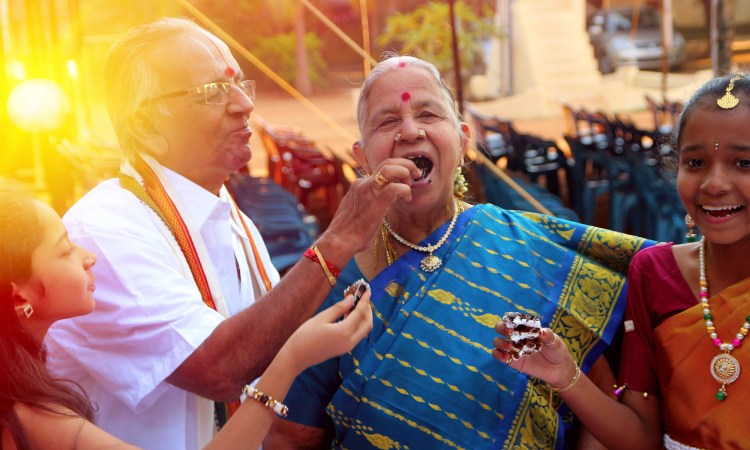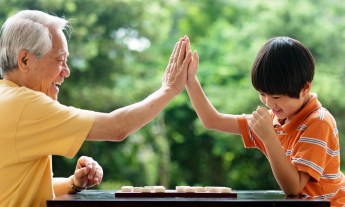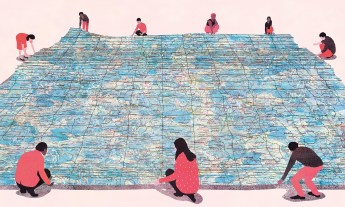
The world’s population is getting older. Across the globe, people are living longer thanks to advances in healthcare, nutrition and technology. This population shift brings with it incredible possibilities — but also a new set of challenges. So … How do we care for our elderly?
Writer and scholar Jared Diamond (TED Talk: How societies can grow old better) examines the vast differences in how societies across the globe view and treat their senior citizens. Some groups revere and respect their oldest members, while others see them as senile and incompetent, making them the butt of jokes. In some societies, children care for their parents at home; in others, children put their parents in homes where others care for them. Some cultures see their elderly as a burden and resource drain and opt for more violent approaches to senior care. Here’s a look at how people across the globe treat their old folks.
So just who is considered old?
The United Nations deems that elderly begins at 60, and celebrates the International Day of Older Persons in October each year to acknowledge the contributions to society made by those no longer spring chickens. According to Diamond, the perceived value of the elderly is an important factor in determining whether seniors are respected or not. This may be a function of who is considered old and when. In the United States a senior citizen is defined as someone who is 65+. In New Guinea, anyone aged 50 or over is considered lapun, or an “old man.” As Diamond points out in his book, The World Until Yesterday, the 15-year gap has wide implications, as the two groups tend to have different physical and mental abilities at different ages.
Where do the elderly live?
The Confucian teaching of filial piety shapes the living arrangements of the elderly in Asia. About three quarters of elderly Japanese parents live with their adult children, a pattern replicated in Korea and China. China’s Elderly Rights Law mandates that children visit their parents frequently, no matter how far away they live. If children don’t comply, they could face fines or jail time. “We raise our children to take care of us when we get old,” one Chinese senior citizen told the BBC.
But of course, it doesn’t take Confucian ideals to place value on spending time with the elderly. Article 207 of the 2004 French Civil Code requires that adult children “keep in touch” with their elderly parents. The law was passed, according to an article in The Week, in response to a study that showed a high rate of elderly suicides in France (and to a heat wave in which 15,000 mostly elderly people died).
In India and Nepal, the tradition has long been that a newlywed couple moves in with the groom’s family, in what’s called a “patrilocal” living arrangement. But according to the University of Maryland’s India Human Development Survey, shifting economic forces are reshaping residence patterns. As parts of the country urbanize, children are moving hundreds of miles away from their parents. The Indian and Nepalese governments are addressing this by developing state-run elderly care programs.
How do people describe their elderly?
A culture’s attitude towards the elderly is often reflected in its language. Honorific suffixes like “–ji” in Hindi enable speakers to add an extra level of respect to important people — like Mahatma Gandhi, who is often referred to as Gandhiji. The word “mzee” in Kiswahili — spoken in many parts of Africa — is a term used by younger speakers to communicate a high level of respect for elders. And as this report reveals, the Hawaiian word “kūpuna” means “elders,” with the added connotation of knowledge, experience and expertise.
In Japan, the suffix “–san” is often used for elders and reveals the nation’s deep veneration for the old. The country holds an annual Respect of the Aged Day, with the media running special features that profile the oldest Japanese citizens. The Japanese also see a person’s 60th birthday as a huge event. “Kanreki,” as the celebration is called, marks a rite of passage into old age.
What foods do the elderly eat?
Around the world, Diamond notes, a number of traditional societies reserve certain foods for the elderly. In Nebraska, only senior members of the Omaha Indians eat bone marrow — they believe that if young men do so, they will sprain an ankle. Similarly, the Iban of Borneo advise that only old men eat venison because, if the young taste it, it could make them timid. In Siberia, the Chukchi believe that reindeer milk will make young men impotent and young women flat-chested, so it’s reserved only for older people.
The Arunta Aborigines, who live near Uluru in Australia, have strong food taboos, believing that eating certain foods can lead to a “series of dire consequences for young people.” They believe that eating parrots will create a hollow in a young man’s head and a hole in his chin. If young Arunta men eat wildcat, they will develop painful and smelly sores on their head and neck. Meanwhile, young women who eat kangaroo tails will age prematurely … and go bald. Meanwhile, quail consumption will lead to stunted breast development, and conversely, eating brown hawks will lead the breasts to swell and burst, without producing milk.
Do the elderly have special powers?
Many elders are respected because of highly specialized skills. For example, Hawaiian grandmothers are revered for their unique knowledge and skill at creating ornate leis and feather accessories. Similarly, since an elderly woman in New Guinea was the only person alive who witnessed a devastating typhoon, her people looked to her for guidance on which plants are safe to eat if another disaster were to strike. Western societies revere the experience associated with age, too — the average age for a U.S. President is 54; the average age for a Supreme Court justice is 53.
Certain societies take this a step further and attribute magical powers to the elderly. The Huaorani people of Ecuador believe that elderly shamans, called “mengatoi,” are endowed with magical powers. These elderly healers sit with the infirm to channel their animal spirits and find a cure for disease.
What does the end of life look like?
End-of-life decisions vary drastically across cultures. Some societies do everything possible to keep their elderly alive; other groups see old and frail members as a burden and take steps to end their lives. Diamond notes that so-called “eldercide” typically happens in communities that are either nomadic or that live in harsh climates with limited resources.
According to a study in American Ethnologist, the Chukchi of Siberia practice voluntary death, in which an old person requests to die at the hand of a close relative when they are no longer in good health. And Diamond writes that the Crow Indians in the U.S. and Norse tribes in Scandinavia follow similar practices — the elderly put themselves in an impossible situation, like setting out to sea on a solo voyage. The Ache of Paraguay let their men wander off to die on the “white man’s road,” and — perhaps shockingly to some — they kill elderly women by breaking their necks.
On the flip side, the Greek island of Ikaria seems to have life-extending magic in its soil, notes The New York Times. Residents of this small Mediterranean island are four times more likely than their American counterparts to live to 90, and they live on average eight to ten years longer after being diagnosed with cancer or cardiovascular disease. Its residents don’t rush through life: they stay up late, eating Kalamata olives, drinking mountain tea and swimming in the crystal-clear water. The answer to this island’s longevity probably lies in its eating patterns and relaxed lifestyle, but nobody can definitively explain the magic behind this island of centenarians.
A version of this story was published on the TED Blog in November, 2013.
Featured image by Nithi Anand/CC BY.











